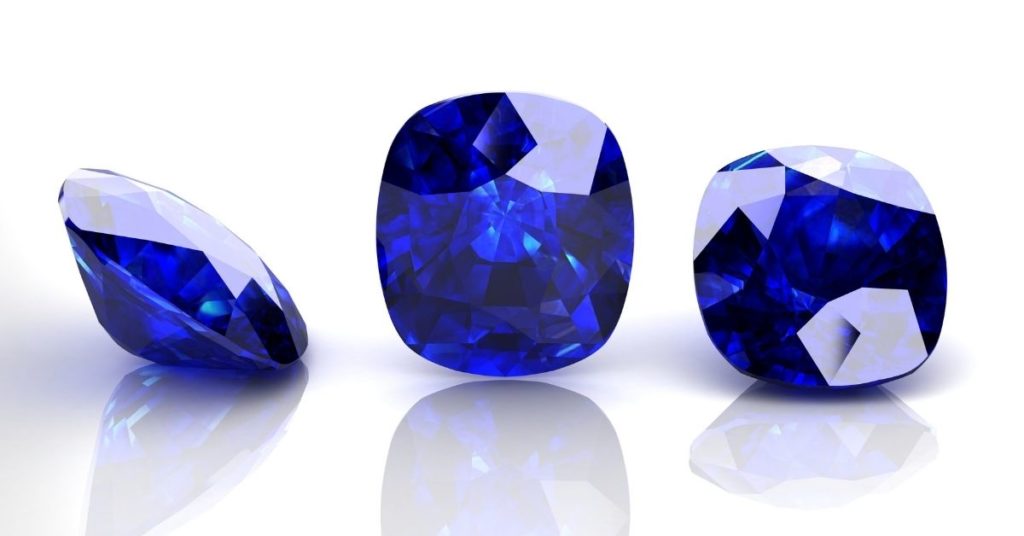What is Synthetic Sapphire, and How is it Produced?
Synthetic sapphire, often referred to as "created sapphire," is a remarkable material that has found its way into various industries and applications due to its exceptional properties. This unique gemstone has captivated scientists, engineers, and enthusiasts alike with its unmatched brilliance, hardness, and versatility. In this article, we will explore the fascinating world of synthetic sapphire, delving into its composition, manufacturing process, and wide-ranging applications.
The Birth of Synthetic Sapphire
Before we dive into the creation process, it's crucial to understand what synthetic sapphire is. Synthetic sapphire is a lab-grown version of the natural gemstone, corundum, which is primarily composed of aluminum oxide (Al2O3). What makes synthetic sapphire truly remarkable is its chemical and structural similarity to its natural counterpart. This synthetic version is created through a meticulous process that mimics the geological forces that shape natural sapphires over millennia.

Manufacturing Synthetic Sapphire
The production of synthetic sapphire is a highly precise and controlled procedure. There are two prominent methods for creating this extraordinary material: the Verneuil process and the Czochralski process.
- The Verneuil Process: This method involves melting aluminum oxide and allowing it to solidify into a boule. This boule is then slowly pulled out of the melt, forming a cylindrical rod. As the rod solidifies, the sapphire crystals within it align to create a single, large crystal. The Verneuil process is known for its efficiency and ability to produce sapphire in various forms, making it ideal for applications like optical lenses and windows.
- The Czochralski Process: In this technique, a seed crystal is dipped into a crucible containing molten aluminum oxide. As the seed crystal is withdrawn, it initiates the growth of a sapphire crystal, which is then gradually pulled upward and rotated. The result is a high-quality, single-crystal sapphire that is commonly used in advanced applications such as electronics, LED substrates, and watch faces.
Both methods involve precise temperature control and require stringent quality checks to ensure the production of flawless synthetic sapphire.
Key Advantages of Synthetic Sapphire
The creation of synthetic sapphire offers several advantages over its natural counterpart:
- Exceptional Hardness: Synthetic sapphire is one of the hardest known materials, second only to diamond on the Mohs scale. Its superior hardness makes it resistant to scratches and abrasion, making it ideal for protective coatings and transparent armor.
- Transparency: Synthetic sapphire is exceptionally transparent, especially in the ultraviolet and infrared spectra. This property is essential for applications in optics, lasers, and high-performance sensor systems.
- Chemical Resistance: It is highly resistant to chemicals and extreme temperatures, making it a preferred choice for semiconductor equipment, laboratory glassware, and critical aerospace components.
- Electrical Insulation: Synthetic sapphire is an excellent electrical insulator, crucial for electrical components and substrates in the electronics industry.

Diverse Applications of Synthetic Sapphire
The remarkable properties of synthetic sapphire have led to its utilization in a wide array of applications:
- Optical Lenses and Windows: Synthetic sapphire's exceptional transparency and scratch resistance make it a preferred choice for optical components in cameras, telescopes, and high-end watches.
- Semiconductor Industry: Synthetic sapphire is used as a substrate for the growth of gallium nitride (GaN) in the production of LEDs, laser diodes, and high-power electronics.
- Aerospace and Defense: Its robustness and ability to withstand harsh conditions have led to its use in aerospace components, including sensor windows and transparent armor.
- Medical Instruments: Synthetic sapphire is used in medical devices like endoscope lenses, where its optical clarity and chemical resistance are crucial.
- Scientific Research: Researchers rely on synthetic sapphire for its optical properties in various scientific instruments, such as spectrometers and analytical devices.
- Watch Industry: High-end watchmakers often use synthetic sapphire crystals to create scratch-resistant watch faces.
Conclusion:
Synthetic sapphire, also known as "created sapphire," is a remarkable material created through precise manufacturing processes. With its exceptional hardness, transparency, and resistance to various environmental factors, it has carved a niche for itself in numerous industries, ranging from optics and electronics to aerospace and medical instruments. The ability to tailor its properties through precise manufacturing techniques has unlocked a world of possibilities for this synthetic gemstone, making it a valuable resource in modern technology and innovation. Its story is a testament to human ingenuity and the continuous pursuit of excellence in material science.
Comments
Post a Comment